The knockout round of the Women’s Euro 2022 has kicked off. As the best teams in women’s football go head-to-head, it gives this side of the beautiful game some well-deserved limelight. The calibre of football has been truly elite at the tournament, showcasing everything the game has to offer. Along with the increased publicity brings critics, many of whom compare the women’s game negatively to the men’s instead of seeing it for its own style and flair. There are innate differences between the two genders which have effects on the positions, most notably for goalkeepers.
This analysis aims not to compare women’s and men’s goalkeeping but to instead celebrate the difference. Using statistics and major trends from the group stage, this data analysis provides insight into the new style of goalkeeping on full display at the Euro 2022.
Height
Perhaps the most obvious physical difference between female and male goalkeepers is height. When looking at the data for shot-stoppers in the women’s game, the average height is 173.5 cm which is 5 8”, far below the average in the men’s game. There is only a 12cm difference in height between the smallest goalkeeper and tallest at the Euros, showing that this is something every goalkeeper in the game is evolving to play with, especially as the goals are the same size as the men’s game.
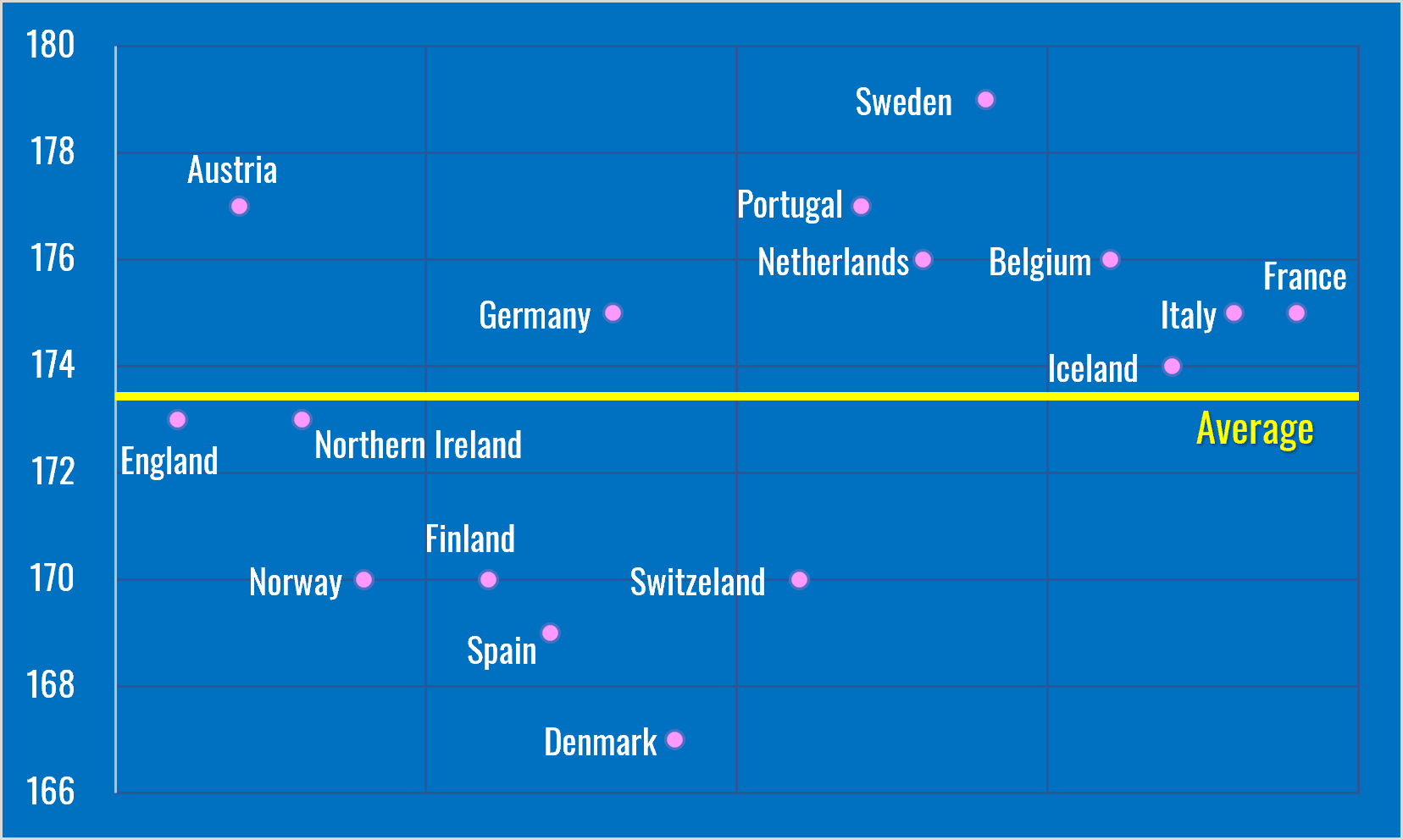
There have been debates on whether the goal size should be modified for the women’s game with the biological difference between the groups of players. On the flip side, if the goals were to be changed, this may reduce the number of teams accommodating their female teams as they must change the goals for this specific purpose. This is not something that goalkeepers are waiting to happen and have taken the challenge head-on.
To combat the reduction in height, the goalkeepers are focusing the training on agility and speed between the sticks. As ex-Liverpool goalkeeper Rachel Brown-Finnis explained, “What you want to see in any goalkeeper is them moving their feet quickly, looking agile, then they can make excellent, technical saves”.
This art of goalkeeping requires a different skill set to shot-stopping, making this position unique to women’s football. The shorter goalkeepers’ strengths can be seen in their technical ability and intelligence. It is a completely new breed of goalkeepers being developed increasing the excitement for the future of the beautiful game.
So far from the Euro 2022, one of the goalkeepers worth highlighting is Frauen Bundeliga‘s Frohms, the German number one who has not yet conceded a goal as Germany progressed with 3 wins and 3 clean sheets to the knockouts. The athleticism she showcased against Spain was a true masterclass for the new style of goalkeeper in the Women’s game as she was able to cover the entire goal while also pulling off quick reflex saves to deny every goal-bound chance.
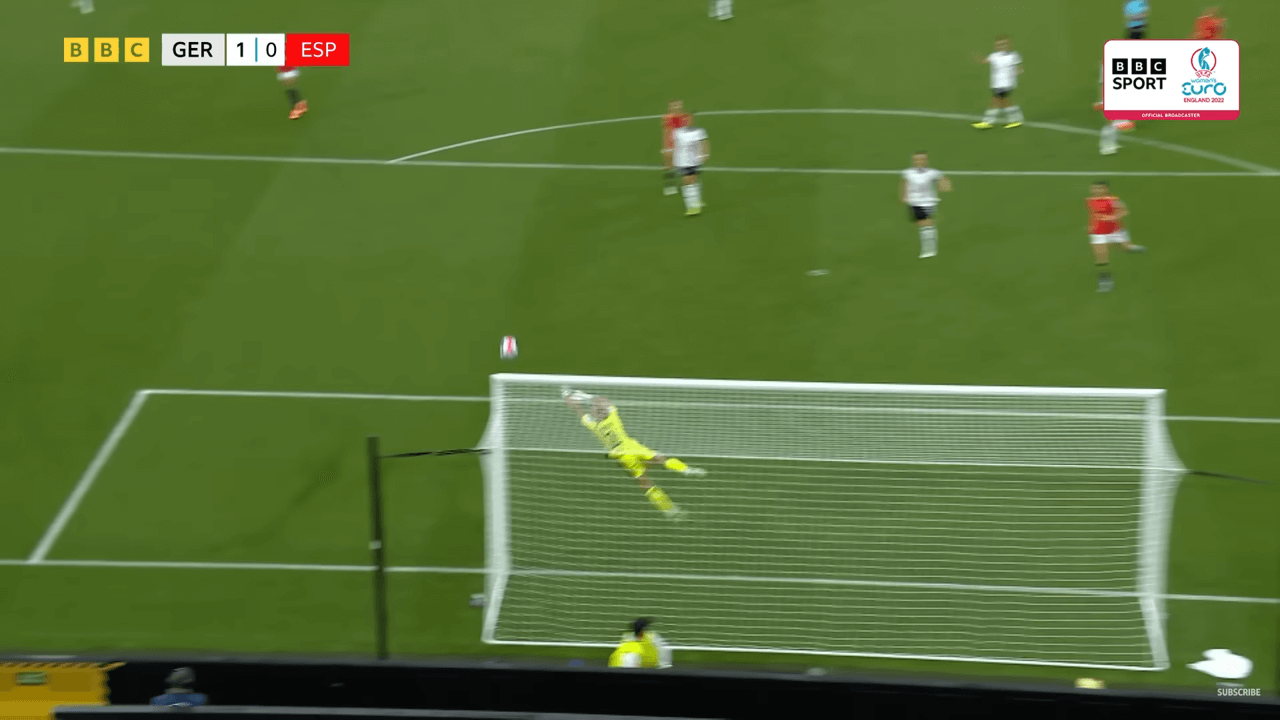
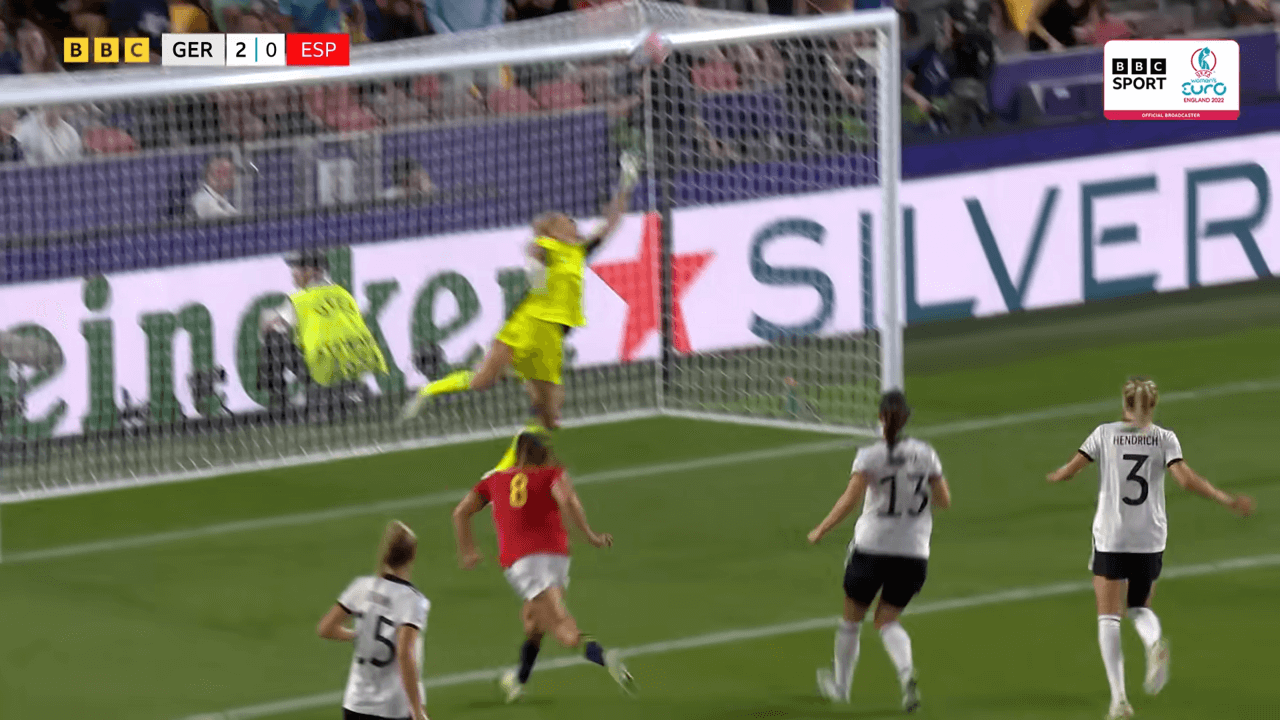
Crosses
After collecting data on all the goals from the group stages of the Euro 2022, it was clear to see there was a trend in the type of goal being scored. This was not chipping the goalkeeper as this only occurred on 2 occasions. The predominant way teams scored was as a result of a cross.
The goals being scored cannot be put down just to the goalkeepers, as there are 10 more players on the pitch, but goalkeepers do have their part to play. The importance of seeing goals as a team statistic is clear when you look at teams like Northern Ireland. In their 5-0 defeat to England, Jacqueline Burns had very little chance of stopping the 2 goals she conceded from outside the box, which was a result of poor defending and excellent finishing.
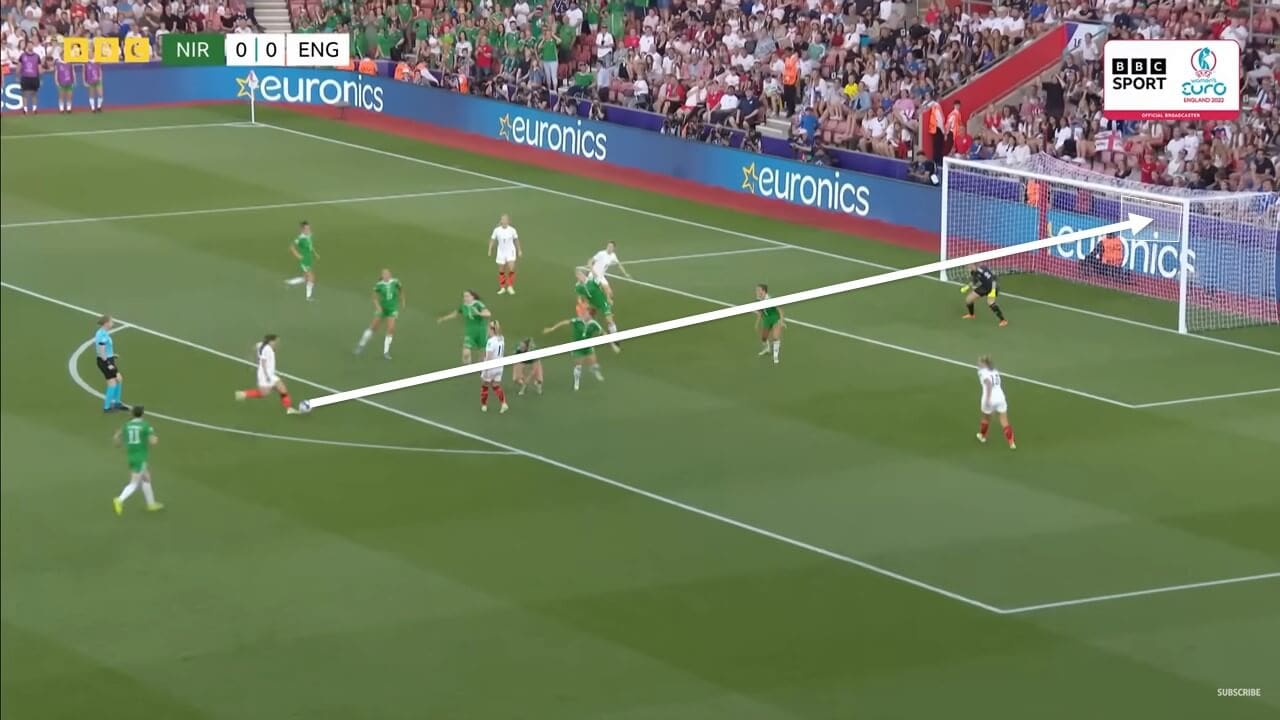
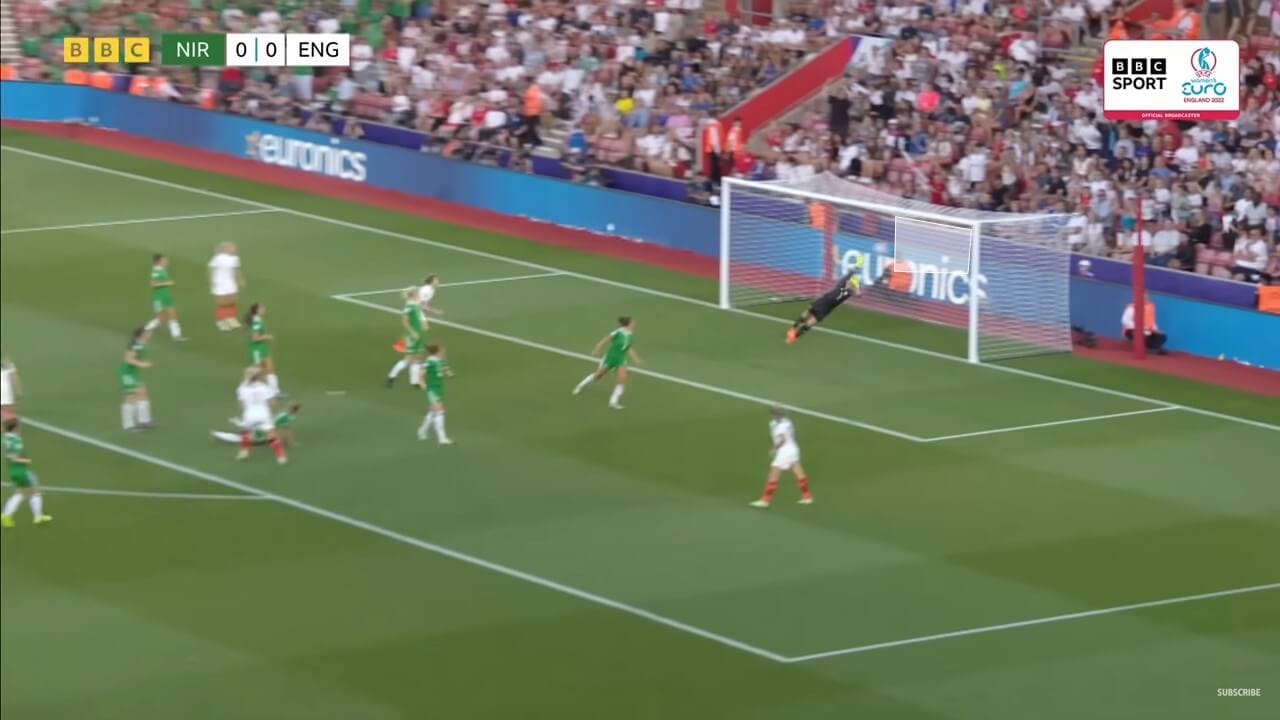
One of the 11 goals Burns conceded at the tournament was also a penalty, another area of the game which is more difficult for female goalkeepers with a penalty minimising the advantages of positioning to cover the goal, exposing the lack of height for the goalkeepers.
In total there were 38 goals from crosses, accounting for 54% of the goals from the group stage. With such a high percentage of goals, there must be something behind the numbers, whether this is a downfall of the goalkeepers or a strength of attackers.
Goalkeepers can play a vital part in crosses, especially when challenging in the air. This rings true with goalkeepers often praised when commanding their area and attacking crosses, to support their defence. Slowly, this is an area the women’s game is learning to improve at as this is still an element that can be exploited by attackers. Goalkeepers are becoming more aware of the best times to come off their lines, which has certainly reduced the mistakes at the tournament.
Corners
Corners have been a huge weakness for goalkeepers, but it looks to have improved at the tournament so far. Previously teams crowded the goalkeepers, using the height advantage to head the ball before the keeper can lay a glove on it. Now keepers are far less naïve when coming off their line, as they analyse when to decide to attack the ball.
The numbers are low for the goals conceded from corners, at just 9 for the group stage (0.38 per 90). Still, a weakness in corner routines is the tactic of crowding the keeper. This is the most deployed routine as it was seen in all but one of the corner goals, clearly suggesting the counter to this has not been resolved by all teams. When diving into the 6 teams who conceded from corners, all of them had a 5’7” or smaller goalkeeper except for Portugal.
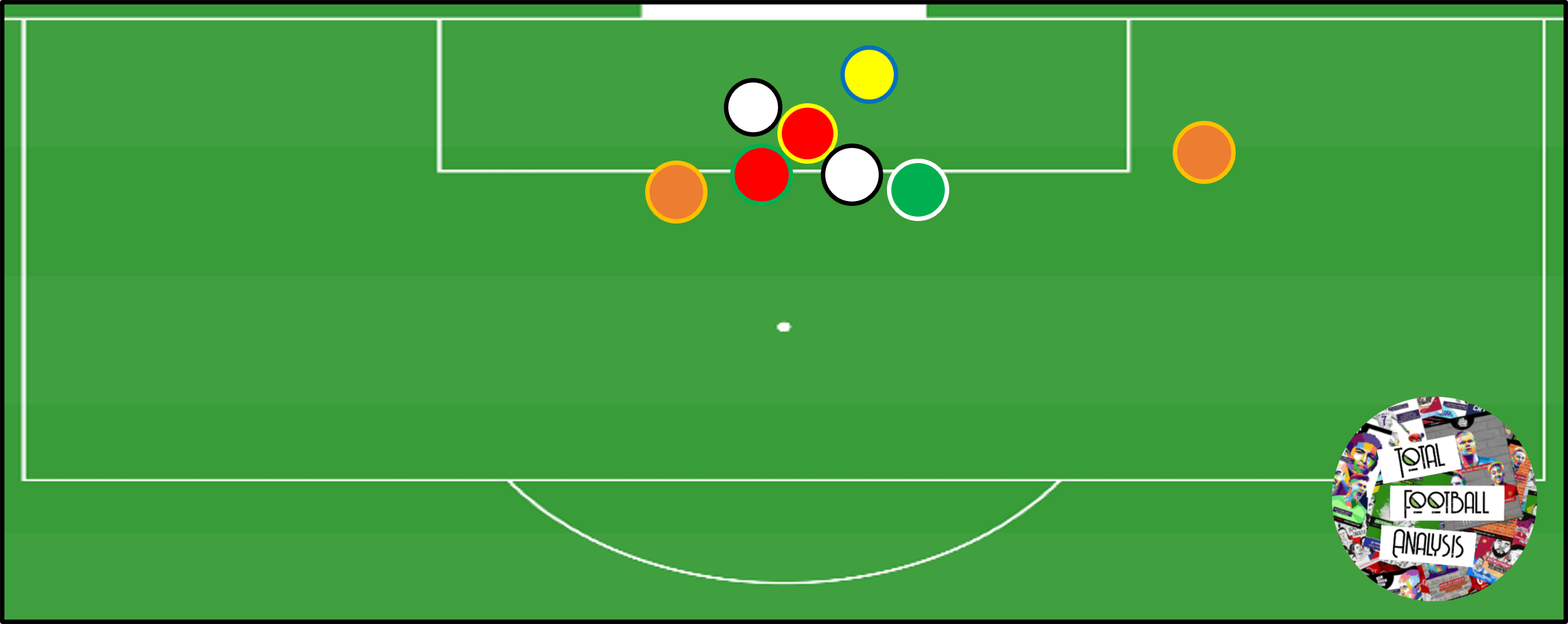
Furthermore, there looks to be a slight correlation between goalkeeper height and goals conceded from crosses, corners and headers as highlighted in the table below. There is nothing to say that smaller goalkeepers are worse than taller goalies because the defence around them will play a big part in the goals conceded.
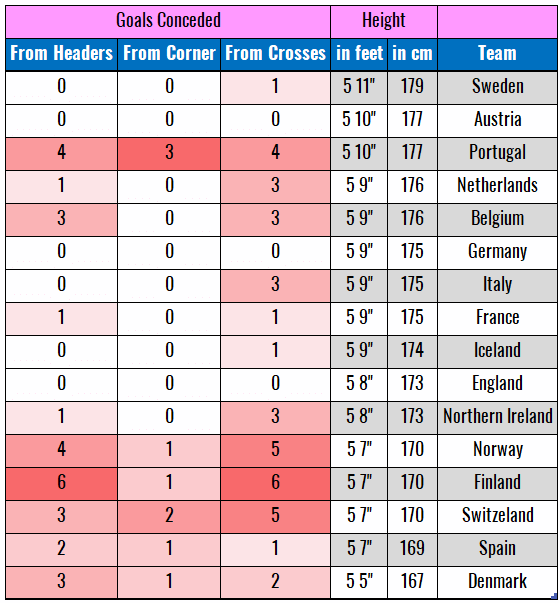
Solutions to crosses and corners
Reducing the effect of crosses and corners is not a simple one size fits all solution, with the differences from team to team and the unique system every team will play. If the crossing is something teams are looking to limit, then there are a few areas of the attack they can look to counter.
Reducing the number of crosses
First of all, stopping the cross. Well, this is a problem every manager will try to solve as preventing the cross limits the chance of the opposition scoring.
When strategising to prevent crosses, it is not as simple as making the defensive shape wider because that will leave the gaps through the centre of the pitch too open. Width is a tricky tactic to combat because of the speed and stamina required to defend this style of play, which is slightly more difficult for females.

Therefore, risking the solidity in the middle of the shape can be just as damaging with the echelon of players far greater than ever seen at a European tournament. If making the defensive structure wider is a potential fix but without the risk of opening up space in the central channel, then changing the formation is a good option. Selecting a five-at-the-back formation can utilize the wing backs to man-mark the wingers having a player in the wide channel ready for the ball to be played.
This is not a route every team will want to go down, with it limiting the formation choices away from a backline of four players. If stopping the crosses is not a viable option then preparing for the crosses should be next on the list.
Covering the spaces in the box
To prepare for the crosses, increasing the number of defenders in the box to compete for the crosses is easily obtainable. For open play crosses this may again take the form of a five at the back formation or by having one or two holding midfielders who can drop into the back line to increase the number of bodies in the box. More players in the box limit the area the goalkeepers must cover for aerial duels.
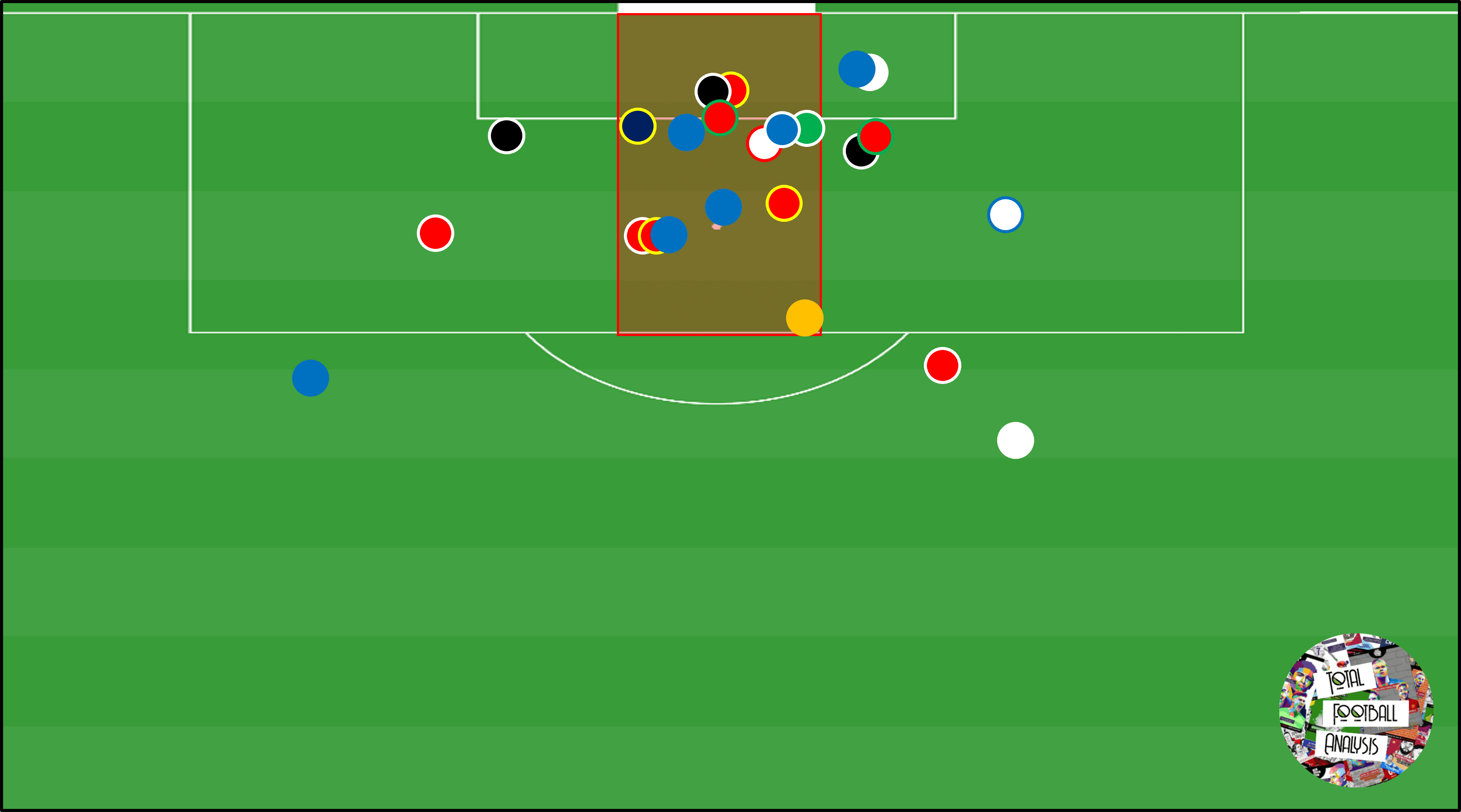
The open space in the box has exposed the goalkeepers on many occasions in the group stage. The outfield players need to ensure all players and spaces in front of the goal are occupied because 48% of goals in the first round of group stage matches were scored in this zone, making this an important area to protect.
England didn’t concede a goal in their group stage matches and had a great system for dealing with crosses. They filled the box with players, seven in this instance, and then gave their full-backs or wide players the license to close down the opposition winger in a one-versus-one.
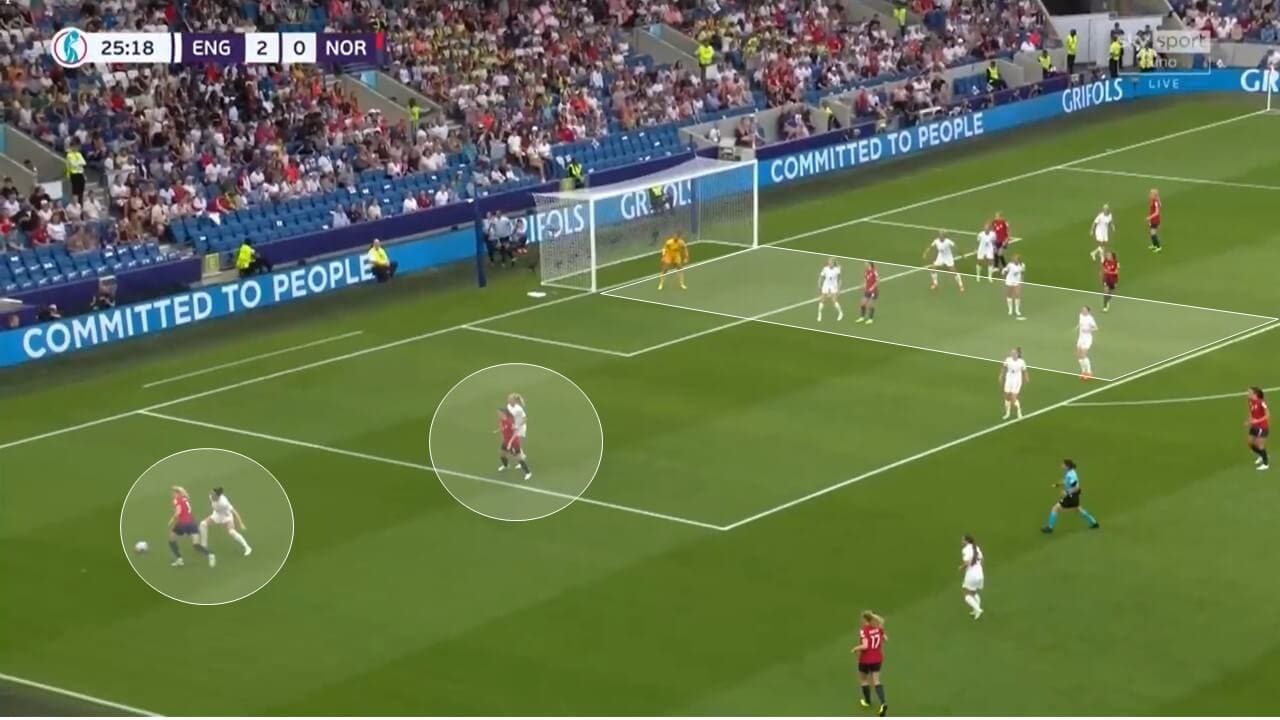
With the numerical advantage in the box, England were prepared for the cross, while also looking to prevent the ball from coming in at the source. Not only did England use this system effectively in the group stage, but so too did France, who only conceded 1 goal from a cross using an almost identical system. One issue France needed to watch out for was being too far forward in the box leaving the free opposition players at the back post and exposing the area in front of the goal.
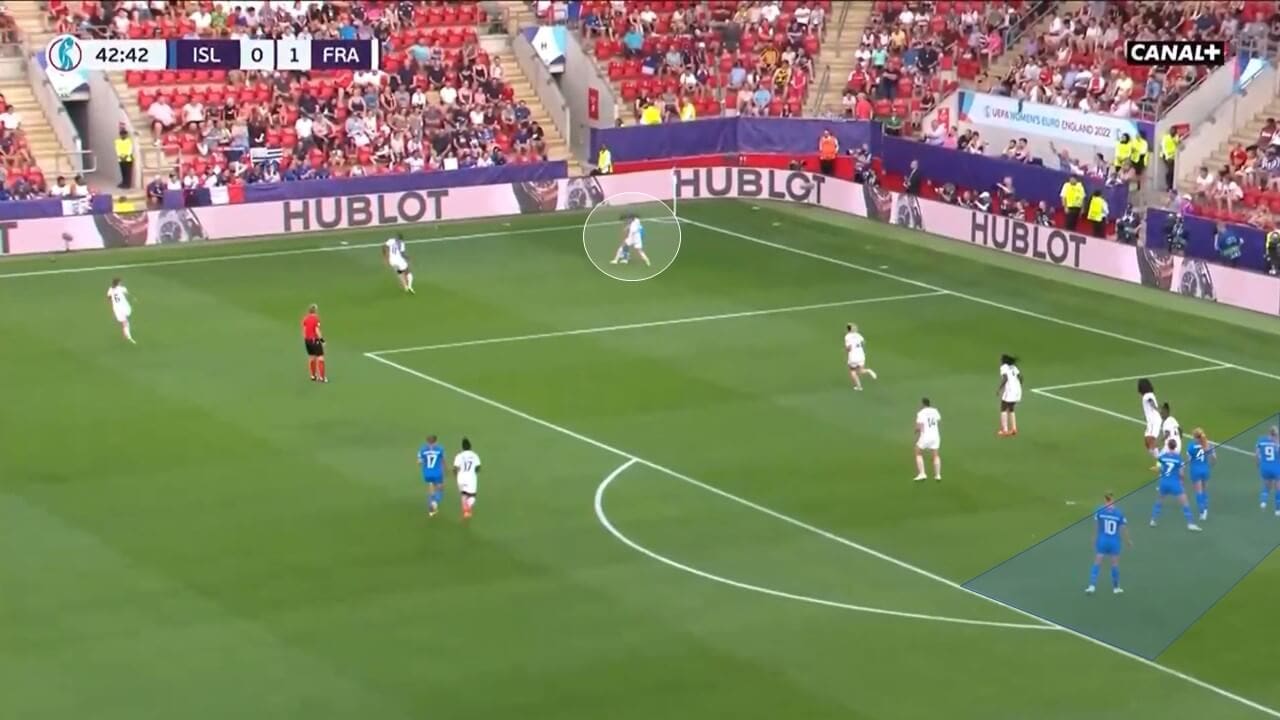
Clearing a path for the keeper
Corners give a different challenge to the defenders and goalkeepers with the opposition able to throw more players in the box. Much like many of the corner routines, crowding the keeper is something that is frequently used. As a defensive unit having more players in front of the goalkeeper can make the task of catching, punching or being first to the ball challenging for the player between the sticks.
With height and aerial ability in other positions in the starting lineup, having a zonal system to free up the strongest player at winning aerial duels is a better option than relying on the goalkeeper. Having these players operate around the six-yard box to provide the height around the goal mouth, allows the rest of the teammates to man-mark slowing the oncoming runs from the opposition.
If the height is not an issue for the goalkeeper, then organizing the players to make a clear path or area in front of the keeper is most suitable. As Sweden utilise with ex-Atletico Madrid and Chelsea goalkeeper Hedvig Lindahl
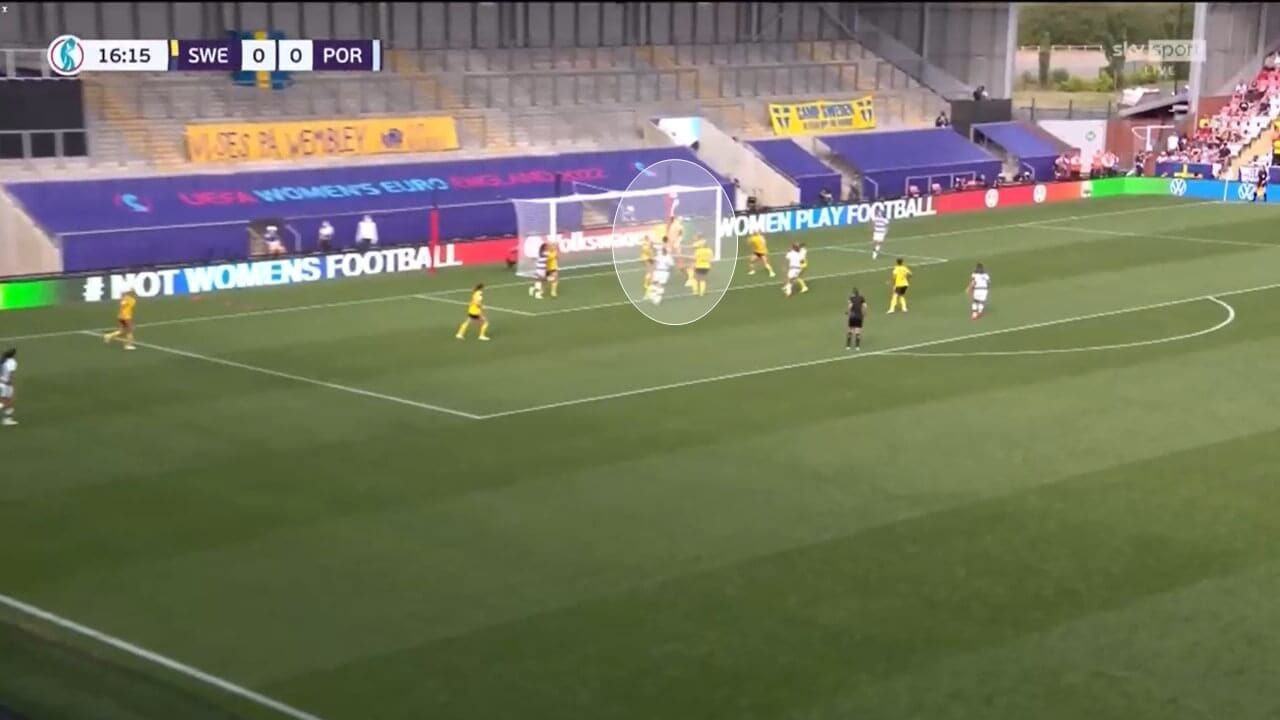
Summary
The goalkeeping at the Women’s Euro 2022 has been phenomenal when compared with the previous years where it has sometimes been a liability for the teams. Now it is a part of the game that is carving a new form of keeper that is agile, quick and intelligent to combat the biological differences to the traditional male goalkeeper.
With the development of this position comes understanding the statistics behind the game and the trends leading to goals. Crossing and corners have been a problem for a long time but have started to be resolved by the top teams, and will lead to more unique tactical battles in the future.

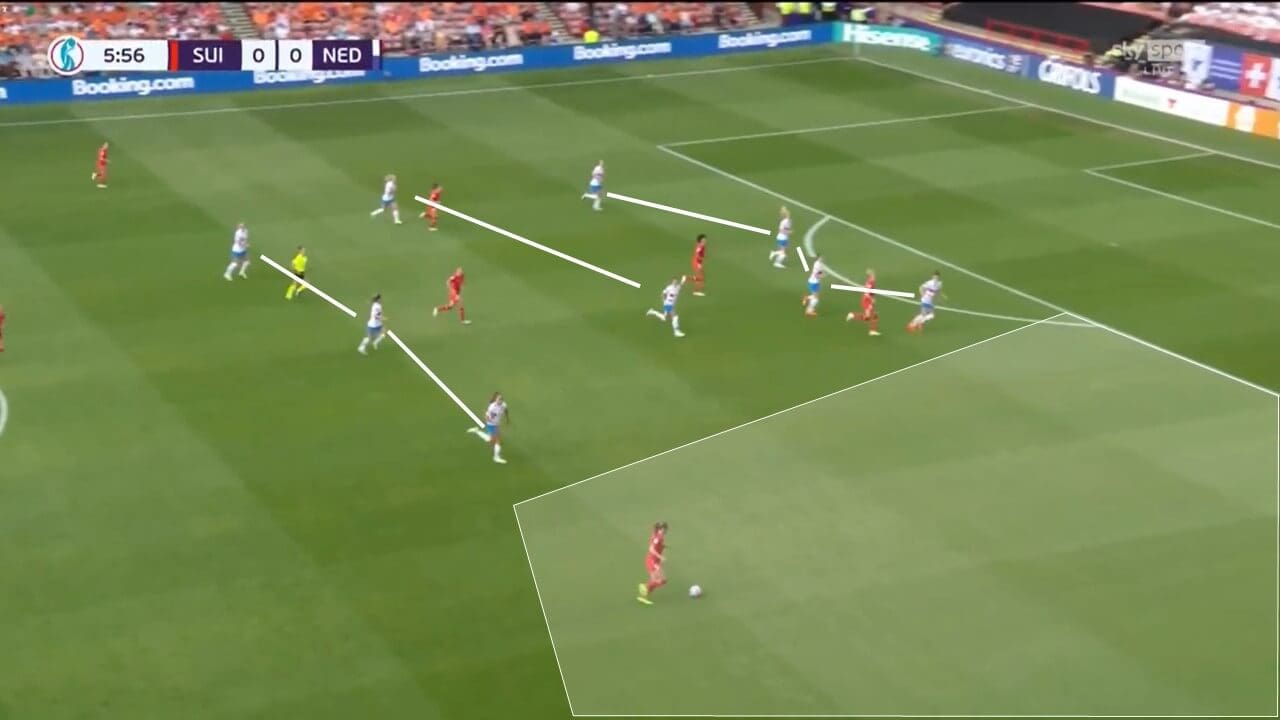




Comments